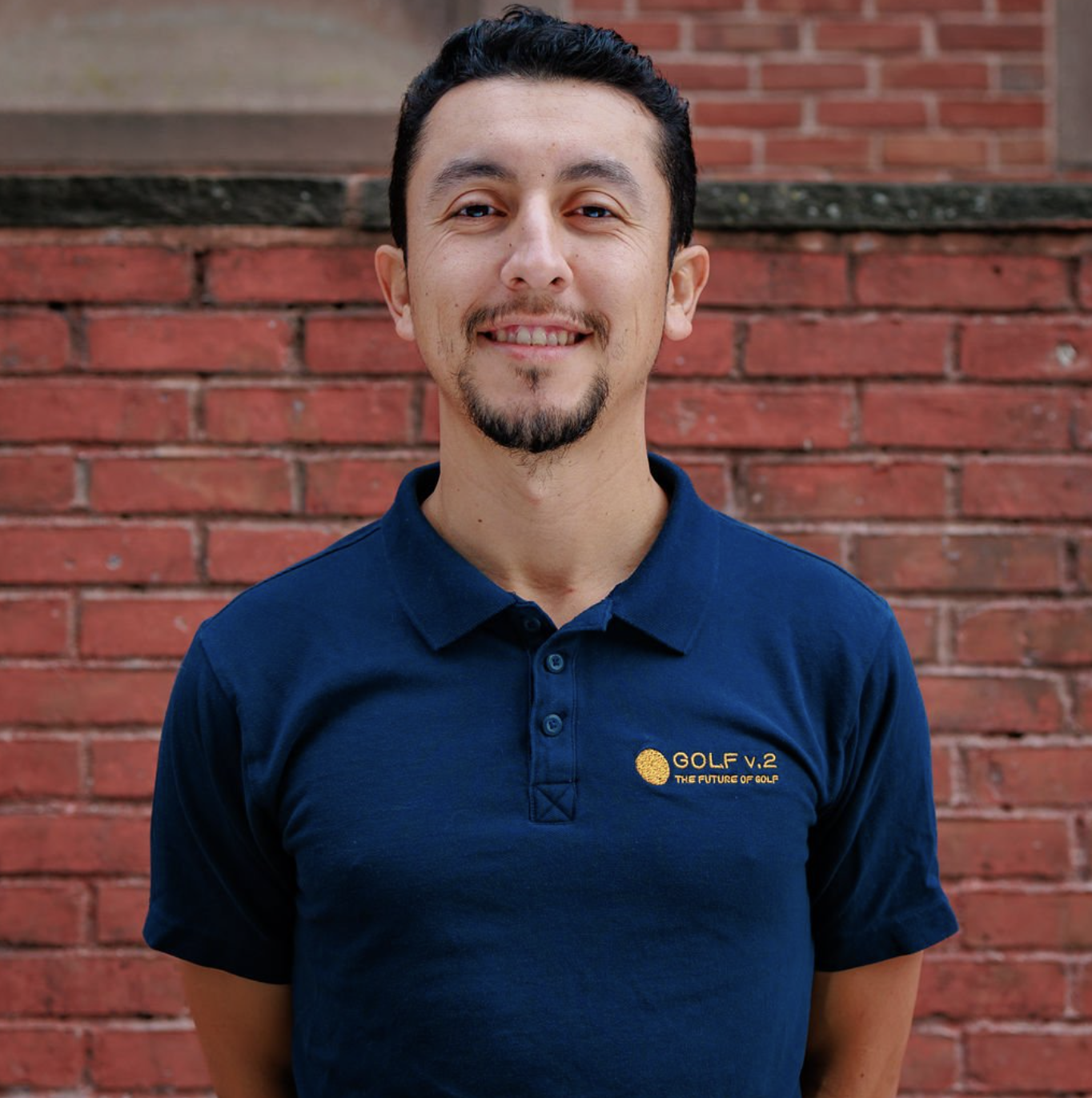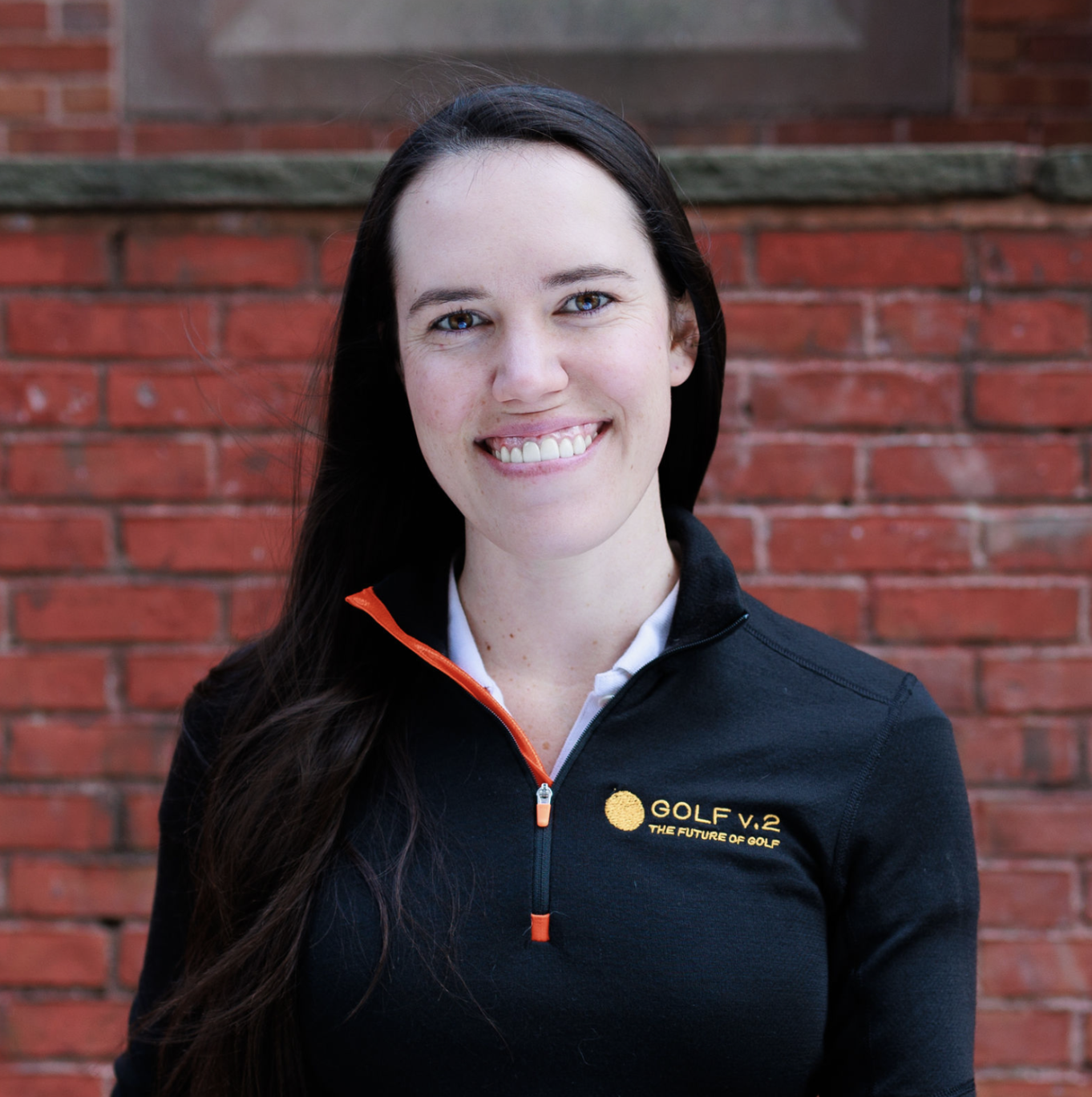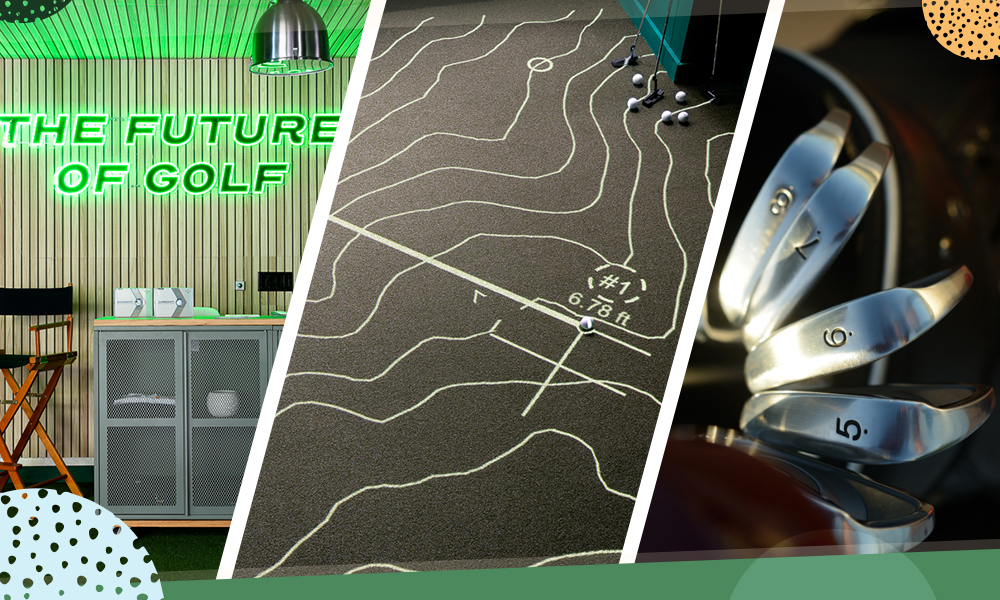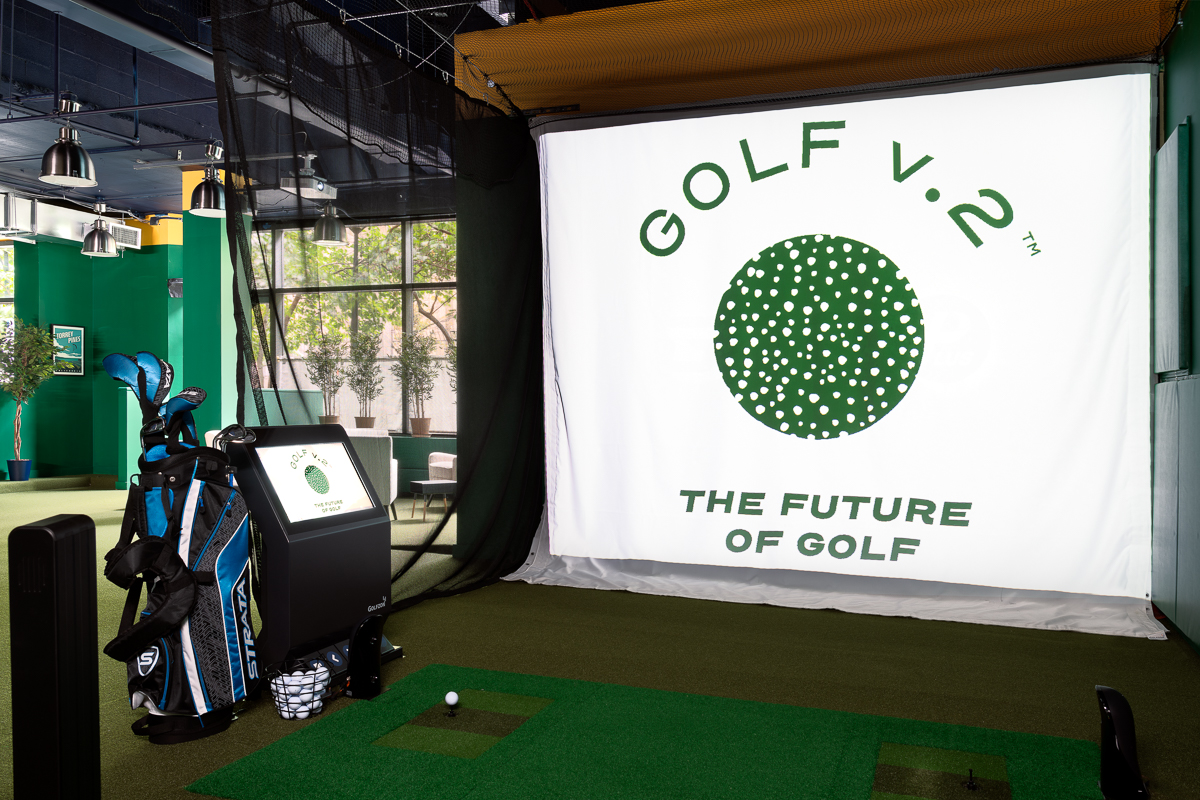Golf is experiencing a huge wave of popularity with people who dusted off clubs or picked up the “socially distant” sport during Covid. Roughly one in seven Americans hit the links last year, according to the American Golf Industry Coalition.
But heading to the golf course to get in needed practice time can be a hurdle for urban golfers. Managing public transit with a full set of clubs is no easy task, not to mention the time commitment to travel to the course and play a round. GOLF v.2, a year-round training facility, is bringing indoor golf practice and instruction to urban neighborhoods. Each location features state-of-the-art simulators combined with in-person instruction from experienced golf pros.
That technology is paired with coaching from a team of professionals. “We’re a training academy that has the highest level of instruction that you can find in New York City, and we cater to adults and juniors at all levels who want to get better and take their game to another level,” says Alberto Rezende, founding partner at Golf V2. The business is not like other golf entertainment venues. “The example I like to give is that you wouldn’t go to a water park to learn how to swim. We all love to go, but if we want to be serious about the sport we will train in a different environment. Here at GOLF v.2, we’re much more focused on the instruction and improvement of the player than anything else,” he says.
GOLF v.2 – for version 2.0 – is a nod to the future of golf instruction and training that leverages technology with golf simulators and cutting-edge software systems such as Golfzon and PuttView. Simulators can act as both a practice driving range and simulate a 9- or 18-hole experience on more than 200 courses, including the likes of Pebble Beach, Oak Hills and Kiawah Island. That “future” of golf is already common practice among PGA professionals. Many of the touring pros use golf simulators to practice and train. GOLF v.2 brings that same top-shelf training technology and professional discourse to the everyday golfer.

“Regardless of whether you’re a beginner or a scratch golfer, we’re happy to help you improve by giving you the right information,” says Mark Anguiano, a professional golfer and Director of Golf at GOLF v.2 in Tribeca. “I think we have some of the best instructors in the city, and our goal is to make sure people who come in and see us consistently are gaining knowledge about golf, which hopefully makes them a better player and also makes golf more fun for them,” he adds.
The company opened its first location in Brooklyn Heights in September 2022 followed by a second location in Tribeca and a third that is set to open this fall in Midtown West. Their growth plan is to continue opening boutique locations in high-density, family-oriented neighborhoods that create greater access to golfing opportunities within walking distance.
Pairing technology and professional instruction
Training technology is getting better and better, and more facilities across the country – including golf courses and private golf clubs – are installing simulators to assist with practice and training. Technology is able to quantifiably measure the different factors that go into a golf swing, such as the club face, club path and foot dynamics. Video input after each swing captures data, as well as provides a replay for the player and the instructor. GOLF v.2 is committed to continue adding value to its membership by expanding on those technologies. For example, they plan to add balance plates that teach proper footwork and weight shift. “What makes golf hard is that sometimes you don’t know what went wrong. So being able to clearly see that on a screen is half the battle to fixing it,” notes Anguiano.
Players can work on all aspects of their game – driving, fairway shots, pitching, chipping and putting. Another advantage of practicing in a simulator is that the ball sits on a nice, flat surface every time, which takes out some of the variables that can impact a shot, such as an uneven lie, different grass types and weather. For example, it can be tough to try to fix a slice in an outdoor range when you’re also fighting the wind. “When you’re inside working on a flat, perfect lie, you can then focus on the right fundamentals to get better,” says Anguiano.
Simulators are changing the way people approach training and playing the game. For some people, one of the biggest challenges is finding the time to golf. The simulator allows you to play 18 holes in under an hour, and you can bring your spouse and kids with you. “Getting better at golf is hard enough in itself. So if you just learn how to do it correctly indoors, we can be efficient and squeeze your practice time into your busy schedule,” says Anguiano.
Golfers purchase a membership that gives them access to a certain number of hours on simulators plus an array of other technology and services, including PuttView, an augmented reality system that projects onto the green. “We’ve been really thankful to be so well received in the community. I think people are excited about the idea of having something to do that’s not the same routine activity like dinner and a movie,” says Molly Maynard, GOLF v.2 Director of Membership and Marketing.
Training a new generation

Another important component of GOLF v.2’s “future of golf” vision is to develop a new generation of golfers through its junior programming. “We want to develop a solid junior program because nothing could be more in line with the future,” says Maynard. For both kids and adults, learning the game of golf can be intimidating, especially if they are standing at a driving range next to someone who is hitting 300-yard drives. GOLF v.2 provides a safe, comfortable space that focuses on instruction while still providing a welcoming social environment for all members, she adds.
GOLF v.2 is teaching kids the fundamentals of golf along with some important life lessons. “The way that we organize our junior program is in a way that they’re put through constant competition, whether it be large-scale competition, small group competition or individual competition,” says Kyla Williams, a PGA associate and GOLF v.2’s Director of Junior Programming.“We do this in order to help them develop stronger resilience. So that at the end of the day, we’re not just developing the golfer, but the whole human,” she adds.

The junior golf program groups kids by age for instruction and starts as young as three with Toddler Tee Time. “We’re able to really fine tune and give custom skill grouping for each junior based on where they’re at as a person, not just as a player,” says Williams. Kids also go through a “Club Up” program, which is a skills test across the five categories that helps them to advance. In addition to the junior golf program, GOLF v.2 offers one-on-one instruction, small group instruction, clinics, as well as hosting special events, such as ladies’ nights or outdoor tournaments at local courses.
GOLF v.2 welcomes the growth of other golf entertainment venues, which is helping to bring more attention and more new players to the sport. “We see GOLF v.2 as complementing what other entertainment-oriented concepts are doing,” says Rezende. “The more the sport grows, the more it benefits everyone.”



